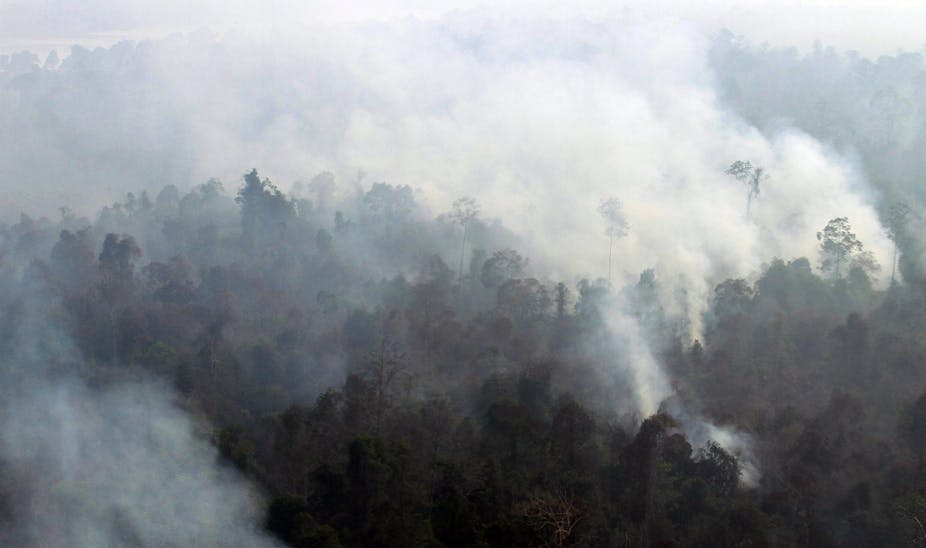This week’s United Nations Climate Summit produced the New York Declaration on Forests. It promises to halt deforestation, one of the biggest contributors to global carbon emissions, by 2030.
Indonesia, whose forests are among the fastest-disappearing in the world, joined countries, companies and civil society in signing the pledge.
But the moratorium will not make much headway in stopping the destruction of Indonesia’s tropical forest, the world third’s largest in size after Brazil and the Democratic Republic of Congo, unless the government makes serious reforms in their forest management.
In the past years, Indonesia has already targeted a decrease in greenhouse gas emissions and enacted its own moratorium on new permits to clear primary forests. This has not stopped palm oil companies opening land for their plantations and mining companies digging in protected forests.
The following is a Q&A with presidium member of Indonesia’s National Council on Forests Martua Sirait.
What is Indonesia’s policy in fighting climate change?
In 2009, Indonesia pledged to cut its greenhouse gas emission by 26% by 2020. One of the biggest contributors of greenhouse gas emissions in Indonesia is from deforestation.
In 2011, Indonesia enacted a two-year moratorium on new permits to clear primary forests after receiving US$1 billion from Norway in a REDD (Reducing emissions from deforestation and forest degradation) partnership. It has been extended for another two years until 2015.
What are the challenges in stopping forest destruction in Indonesia?
First, Indonesia had not agreed on a forest emission reference level until very recently. This was due to the policy makers and academics squabbling over how fast Indonesia’s rate of deforestation really is. Research by the University of Maryland claims that Indonesia has the fastest rate of deforestation in the world, with 15.8 million hectares lost between 2000 and 2012, and with 2012 seeing the highest rate of 850,0000 hectares cleared. The forestry ministry meanwhile claims that deforestation rate to be about 628,000 hectares.
Policy makers and academics were trapped in a debate on numbers and forgot about the real cause of deforestation. While they engage in the debate, deforestation and conflict over the ownership of forests continues to occur.
Second, Indonesia’s moratorium on new permits to clear primary forests is filled with exemptions. The government exempts land on secondary forests that would be used for energy and agriculture. As a result, the government continues to allow new permits for forest clearing for large-scale palm oil plantations and mining.
While Indonesia pledges stopping deforestation it also targets 15.9 million hectares by 2030 for timber estates, which would clearly need forests to be cleared.
At the same time 30,000 villages and ancestral lands of indigenous people are conflicting with forest areas. This also needs to be resolved.
What would the new administration of Joko Widodo likely do in halting deforestation?
Joko Widodo is a forester. He was educated at the Faculty of Forestry at Gadjah Mada University, so he has a background knowledge about the environment. He would be able to capture the essence of forest destruction beyond the numbers.
Widodo did not explicitly mention targets in stopping deforestation in Indonesia, but he promised to rehabilitate 100.70 million hectares of land. He also promised to look for ways to solve land conflicts and improve the welfare of rural communities in Indonesia.
Widodo also stated that he would not tolerate sectoral ego between ministries that causes weak coordination. One of the problems with stopping deforestation in Indonesia was the conflicting interests between the Forestry Ministry, the National Land Agency (BPN), the Agricultural Ministry, the Ministry of Energy and Mineral Resources, and local governments.
Widodo has mentioned to use a one map policy to create transparency on land status, land use and permits.

